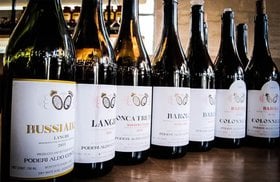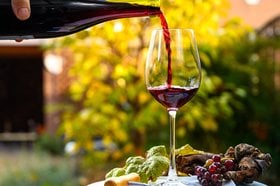Aged Wine: How Wine Ages, 10 Exciting Bottles to Buy (2025)
Having exquisite wine aging in your cellar can be an incredibly rewarding experience! And drinking a bottle of aged wine has always been of romantic allure to wine collectors.
But the catch is - very few wines age well after bottling. About 90% of all wines are meant to be drunk young.
So, what is special about old vintage wineanyway? What happens to wine as it ages? Which wine bottles should you age?
In this article, find answers to all your questions on wine ageand the best aged wines to buy now. We’ll also let you in on the easiest way to buy some of these spectacular vintages.
Further reading
- Keep on building a fine wine portfolio? Get started with our Ultimate Guide to Wine Investing.
- And, if you're a white wine fan, you'll definitely all in love with these Amazing Viogner and Elegant Pinot Grigio Wines.
What is Aged Wine?
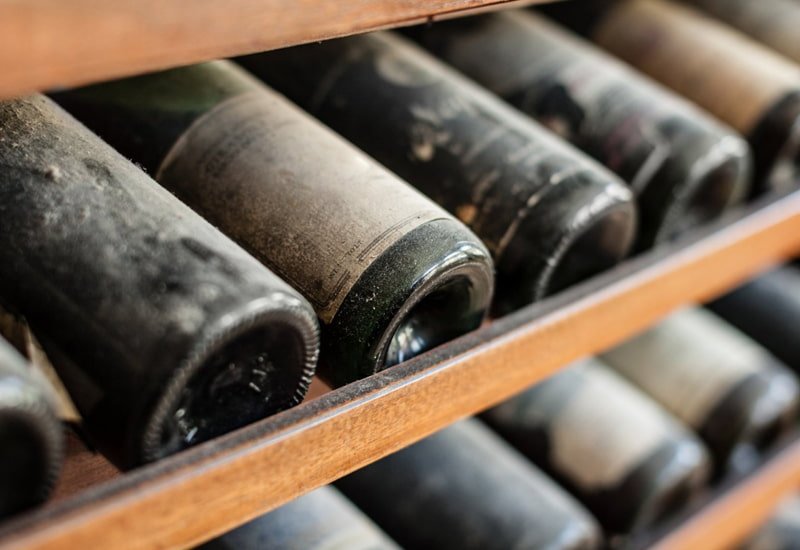
Simply put, bottled wine goes through different chemical reactions which change its composition and nuances over time. These changes improve its flavor profile, aroma bouquet, and texture.
For instance, a young wine with high acidity and harsh tannins can become a lovely and elegant wine with a rounder mouthfeel and richer flavors.
And since aged wine is a rarity that’s so sought-after by collectors, you can say that it improves in quality and market value over time.
With time, red wines like Pinot Noir and Cabernet Sauvignon develop subdued earthy tones and smoky aromas, while age-worthy whites like Riesling and Sauvignon Blanc would have more herbal notes.
Here’s how aged and young wines differ in their taste, texture, and qualities. Aged wines tend to have:
- More complex flavors and aromas
- Softer tannins
- A rounder profile
- Layered tasting notes
- A more refined mouthfeel
On the other hand, young wines have:
- A crisp texture
- Freshness
- Enhanced acidity
- Higher tannin levels
- Sharper flavors
Of course, to age a wine properly in your cellar and let it develop in taste nuances, you need to maintain proper storage conditions such as light, humidity, and temperature ( we’ll look at these factors in a bit.)
But how did wine aging emerge as a practice in the first place?
A Brief History of Aged Wine

Aged wine was held in high regard in Ancient Greece and Rome (8th century BC to 6th century AD.) Older wines could last for decades due to their high sugar content.
In the Middle Ages, the popularity of aged wines decreased. Most of the young wine from Northern Europe was light-bodied and had an aging potential of a few months.
The more longer-lived wines like the sweet Riesling emerged in the 16th century in Germany and Southern Europe.
In the 17th century, aging wine was revived as a practice. The invention of corks and glass bottles enabled winemakers to seal their wines better and prolong their longevity.
Fortified wine (wine with added distilled alcohol) like Port and Madeira had excellent aging potential. These fortified wine bottles could last longer and were exported from Portugal to England, the US, and India.
Aged wines gradually regained their popularity worldwide, and there’s been no looking back ever since!
Now, is aging in the bottle different from aging during the winemaking process?
Aging During Winemaking vs. Aging in a Bottle

Aging during winemaking is called maturation and is usually done in a stainless steel or oak barrel. In the barrel, the wine goes through malolactic fermentation, wine clarification, and stabilization.
During maturation, the wine is exposed to oxygen which causes various chemical reactions that change the wine’s structure.
On the other hand, aging wine in the bottle is not mandatory, and only some winery estates do it before releasing their vintages. In the bottle, the wine is sealed tight in the absence of oxygen. Over time, chemical reactions enhance the final flavor bouquet of the wine.
Can you age wine artificially?
Yes. Some winemakers experiment with these techniques to age wine artificially - exposure to radiation, electricity, or using a Clef du Vin - all of which are shortcuts to years of wine aging. (Clef du Vin is a small stainless steel disc that can be dipped into your glass of wine and start the wine aging process.) Some wineries try undersea wine aging since the water pressure naturally accelerates the aging process in the bottle.
Let’s now look at the variety of factors that influence wine aging.
Factors That Affect Wine Aging
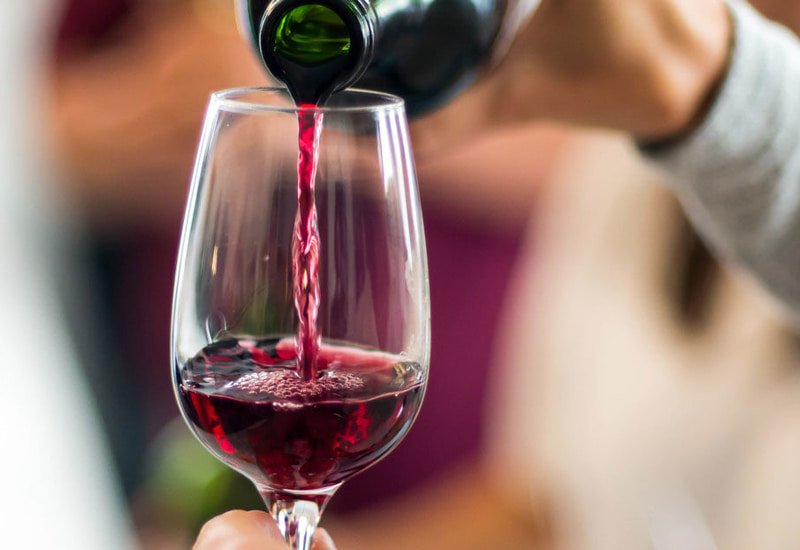
Some of the aging factors, like oxidation, temperature, and light exposure, occur both during the maturation and the bottle aging stages. Others, like the wine storage conditions, affect the wine after bottling.
1. Wine Constituents
The phenolic compounds in wine change during aging. These include tannins, acids, and sugars that come from the grape seeds, stems, and skins during winemaking.
The more concentrated these constituents are, the better aging abilities the wine will have since the phenolic compounds act as preservatives.
For example, wines made with grapes with higher sugar content, from older grapevines, or a wine region with a drier climate will be more concentrated and with higher aging potential. Longer maceration and oak barrel aging periods also increase the phenolic compound content.
After bottling, these compounds can group into larger formations and sink to the bottom of the bottle as sediment, improving the wine’s flavor profile over time.
2. Temperature
By increasing the temperature during maturation, the winemaker can accelerate the wine aging process. However, this can decrease the freshness and flavor of the wine and is considered a bad practice.
3. Light
Exposure to UV light and direct sunlight can trigger oxidation and accelerate the wine aging process both during maturation and in the bottle.
4. Oxidation
Oxidation can occur during maturation and after opening a bottle of wine. Exposure to oxygen changes the wine’s phenolic compounds and directly affects its properties.
For example, during winemaking, wines exposed to controlled amounts of oxygen develop more complex and fully-developed aromas and flavors. In the creation of young white wines, oxidation is avoided, and the wine is fermented in a reductive environment to preserve its freshness and fruitiness.
The wine is in contact with oxygen once again after you open the bottle. Methods like decanting and swirling the wine in your glass can accelerate the oxidation process and allow the wine to open up and expose its full array of aromas.
However, if the wine is exposed to oxygen for more than 3-4 hours, its flavors can become duller.
5. Storage Conditions
Exposure to higher temperatures, direct light, or vibrations might cause the wine to age prematurely and lose its qualities. So, a wine cellar or cabinet should maintain optimal levels of light, humidity, temperature, and vibration.
For instance, the temperature in the cellar should be around 8-12°C for white wine and 12-19°C for red wine.
In cool temperatures, the wine will age slowly and develop its aromas and flavor profile fully.
6. Bottling Factors
Here are the bottling factors that affect wine aging:
- Bottle shock: During bottling, the wine is exposed to small amounts of oxygen which need to settle down in the bottle. This period is called bottle shock and might change the flavor profile of the wine.
- Dumb phase: During its evolution, the bottled wine might go through an insipid phase characterized by a very dull taste and aroma.
- Cork taint: Cork taint might develop if the wine is in contact with the cork. This might cause cork mold and even a change of flavor.
Next, let’s see what happens to wine as it ages.
Effects of Wine Aging
You’ll notice the following changes in your aged wine:
1. Color

White wine has a pale yellow color in its youth. With time, this color changes to a golden or a dark yellow hue.
A young red wine would usually have bright ruby red or dark purple color. This evolves to pale brick red with orange hues as the wine ages.
2. Taste

During aging, the wine taste becomes smoother with a rounder mouthfeel and more complex flavors. This is due to the phenolic compound changes that occur over time.
Wine aging in the barrel during the maturation process can give it new flavors too.
For example, barrel aging in French oak can result in a more refined palate with a silkier mouthfeel. Barrel aging in American oak creates a wine with a sweeter and more intense fruity taste. A winemaker may also age wine in a bourbon barrel to give it a distinct bourbon cask spiciness.
3. Aroma
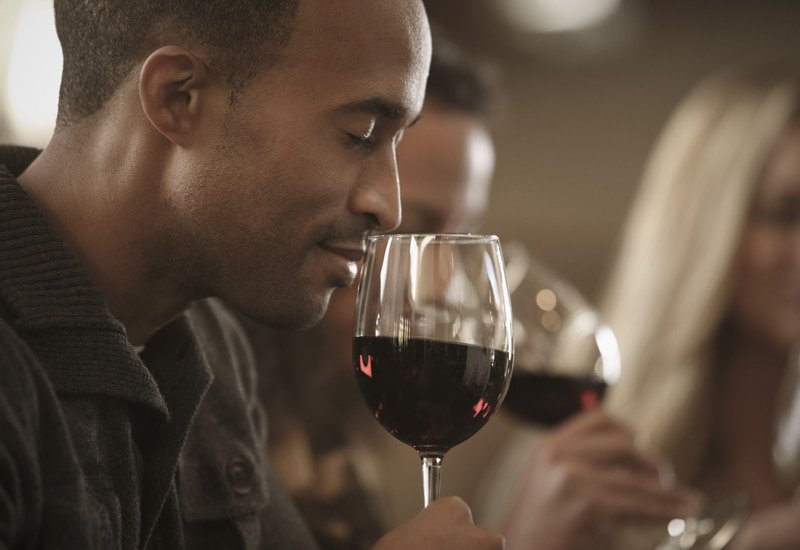
The fresh aromas of fruits and flowers will often transition to a more complex and opulent fragrance as the wine ages. Aged wine tends to have well-pronounced secondary aromas of yeast, earth, and oak.
Now:
Different wines have different aging potential.
Time to find out which wines are really age-worthy!
Which Wines Age Well?
Red wines with higher tannin levels and lower ph (like Sangiovese and Syrah) can improve with time. On the other hand, white wines have only small amounts of phenolic compounds and owe their wine age properties to their acidity.
Other wines like Riesling, Ice wine, and Champagne are usually released in the market after they’ve been aged in a bottle and can be consumed right away. For example, sparkling wines are aged on their lees in the winery for years and sometimes decades. That’s possible because the lees act as a preservative and improve the longevity of the sparkling wine.
These wines are worth storing in your wine cellar:
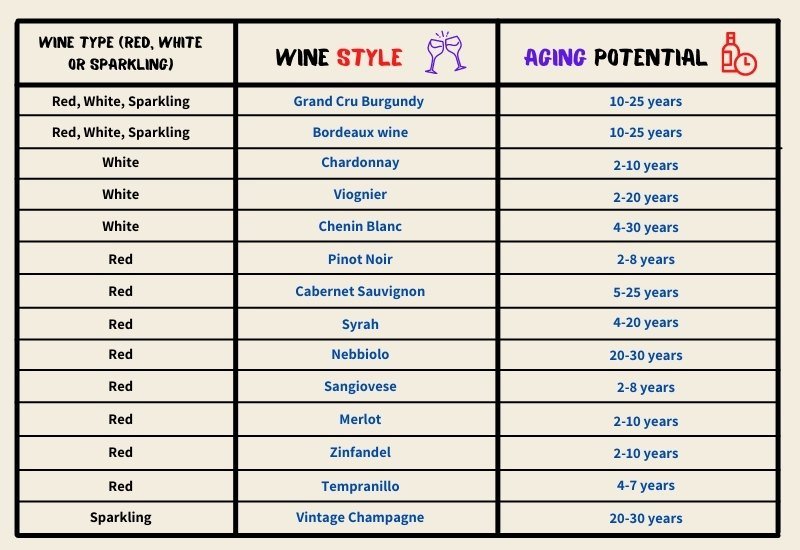
Let’s explore some of the finest aged wines you can buy now.
Best Aged Wines to Buy in 2024 (Including Tasting Notes, Prices)
Here are our favorite aged wine vintages:
1. Screaming Eagle Cabernet Sauvignon, 1992

The 1992 vintage of this elegant Napa Valley Cabernet Sauvignon is at its peak maturity. This elegant Napa Cabernet reveals a beautiful blackberry flavor and opulent aroma of vanilla, oak, and mint.
Price of Screaming Eagle Cabernet Sauvignon, 1992: $19,276
2. Chateau Lafite Rothschild, 1946
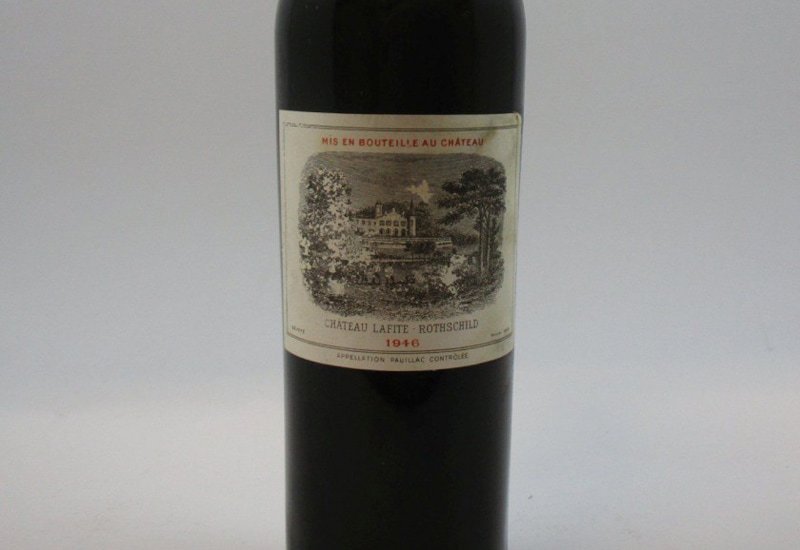
This old Cabernet-Merlot wine from the Chateau Lafite winery has preserved its bright acidity over the decades. On the palate, layers of black currant and plum transition into a more distinct oak flavor and hints of smoke.
Price of Chateau Lafite Rothschild, 1868: $4,686
3. Chateau Margaux, 1945
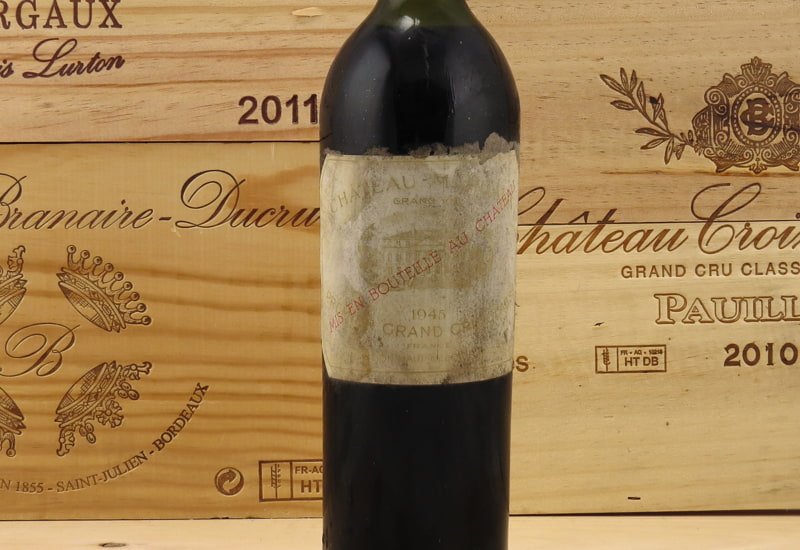
Here we have a classic Bordeaux wine with chewy tannins and a full body. The palate offers cassis and dark fruit tasting notes with a beautiful aroma of oak cask and tobacco.
Price of Chateau Margaux, 1945: $4,178
4. Roagna Crichet Paje, 1998
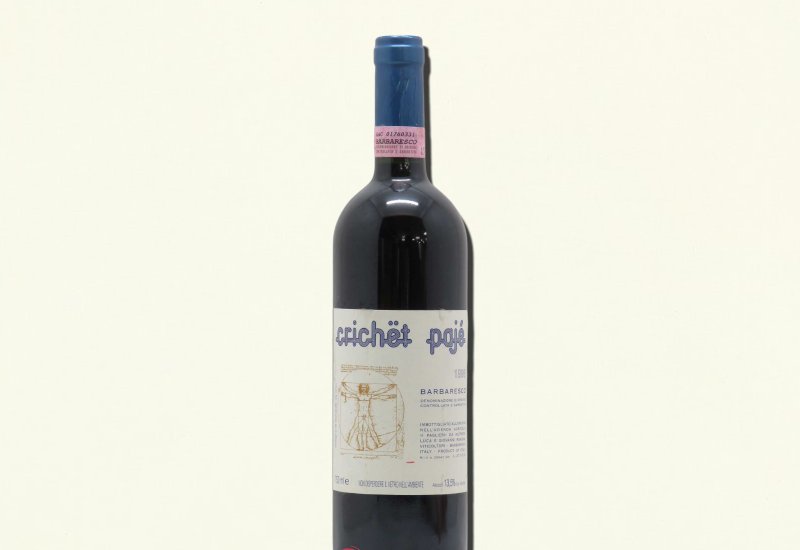
This red wine is made exclusively from old vine plantings of the Nebbiolo grape variety. The vintage has dense tannin levels, bright acidity, and a delightful taste of red fruit, baking spices, and truffle.
Price of Roagna Crichet Paje, 1998: $1,183
5. Penfolds Grange Bin 95, 1954

The 1954 vintage of this great Syrah wine is full-bodied with a dominant blackberry flavor and subtle oak aromas.
Price ofPenfolds Grange Bin 95, 1954: $12,217
6. Egon Muller Scharzhofberger Riesling Trockenbeerenauslese, 1959

This exquisite white wine is made with the Riesling grape varietal. The palate is intense but balanced with white peach, citrus, and honey taste.
Price of Egon Muller Scharzhofberger Riesling Trockenbeerenauslese, 1959: $27,169
7. Chateau Mouton Rothschild, 1945
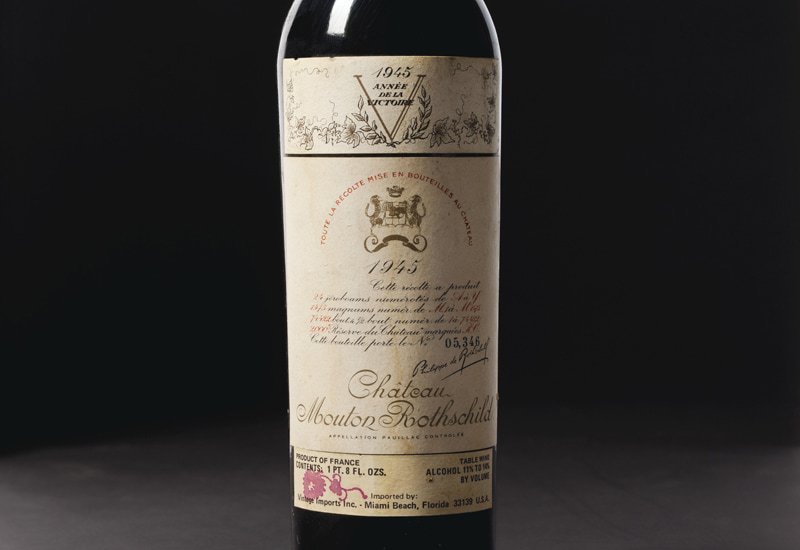
Here we have another old wine from the Bordeaux wine region with elegant blackberry and oak flavor and an opulent nose of baking spices. It is made predominantly with Cabernet Sauvignon and Merlot (and small amounts of the Cabernet Franc and Petit Verdot grape varietals.)
Price of Chateau Mouton Rothschild, 1945: $17,463
8. Cheval Blanc, 1947
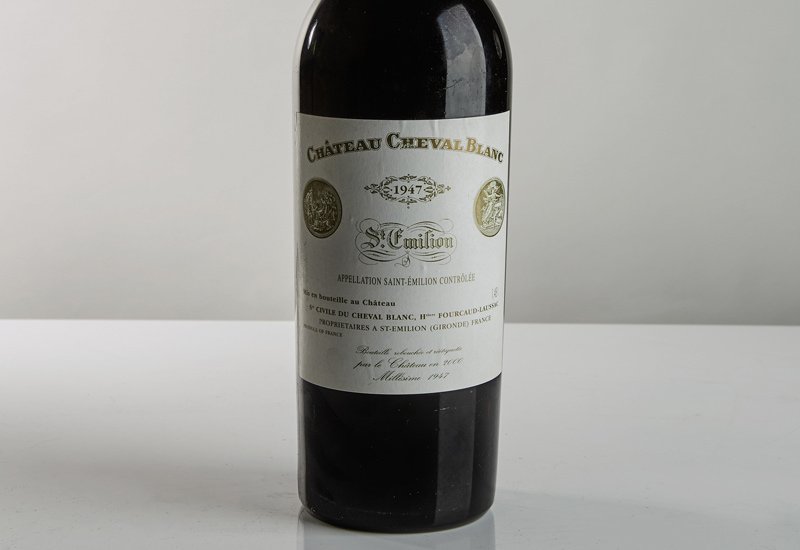
This vintage has a tannic and dense structure with elegant plum and blackberry taste. The nose reveals aromas of vanilla, oak, and earth.
Price of Cheval Blanc 1947: $9,784
9. Domaine de la Romanee-Conti, 1990
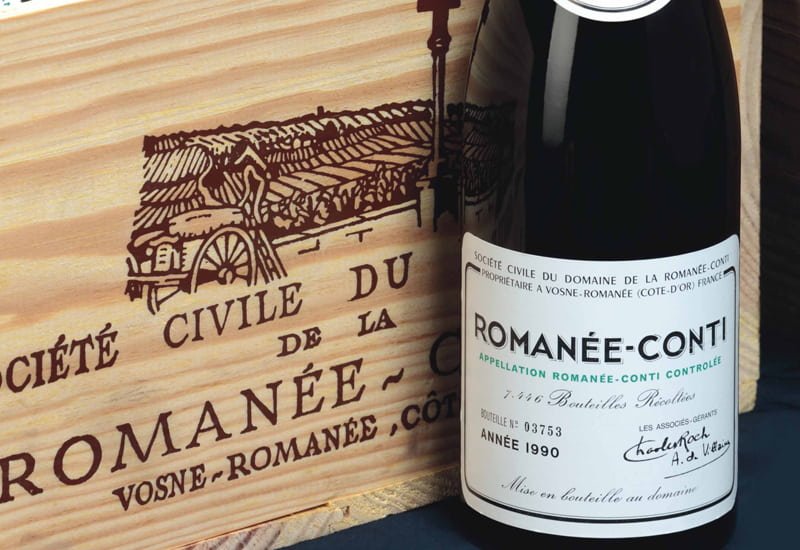
This great wine is exclusively made with Pinot Noir and is highly sought-after among wine enthusiasts. This wine surprises with a pleasant red fruit taste and a gentle earthy aroma.
Price of Domaine de la Romanee-Conti, 1990: $30,462
10. Domaine Leroy Musigny Grand Cru, 2011
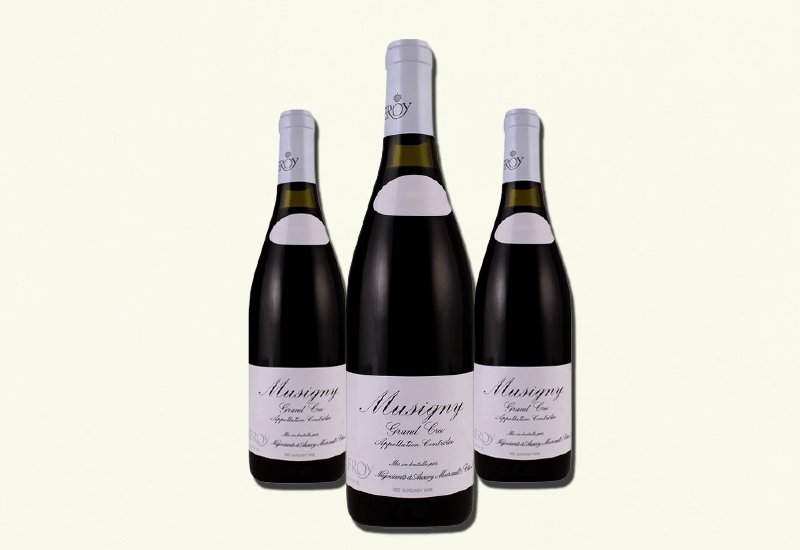
We’re finishing the list with another breathtaking Pinot Noir that has intense raspberry and cherry flavor. The nose reveals mesmerizing allspice, mocha, and coconut aromas enhanced by the 18 months of French oak barrel aging.
Price of Domaine Leroy Musigny Grand Cru, 2011: $45,305
But when is the best time to pop open an old vintage wine?
When Should You Open a Bottle of Wine?

Determining how long to age wine can be quite hard.
Contrary to popular belief, there’s no one perfect moment to uncork a glass of age-worthy wine.
The wine can offer an ever-changing array of beautiful aromas and seductive flavors at different stages of its maturity.
So, how do you know whether it’s better to open your aged wine today, in a month or 10 years from now?
You could buy a dozen bottles and open one each year to experiment and understand the changes that occur in the wine over time.
Or you could use expert help from the Master Sommeliers at Vinovest. Apart from helping you create a winning wine portfolio of collectible wine bottles, the Vinovest wine expert team will also assist you in choosing the right vintages and the best time to open or sell them.
Here’s how:
Buy Fine Aged Wines Through Vinovest

Vinovest is an online wine investment platform that gives you access to some of the finest wines in the world. You can even get your aged wine bottles delivered safely to you, a buyer, or as a gift to your wine lover friends.
Vinovest will help you:
- Curate your wine portfolio with the help of professional data scientists and master sommeliers. You can easily build an online portfolio of old and new vintage bottles of the finest Sauvignon Blanc, Cabernet Franc, sparkling wine, Napa Valley Cabernet, and elegant Bordeaux wine at the best prices.
- Authenticate your wine bottles and ensure you never receive a counterfeit bottle.
- Provide wine storage facilities with the optimal light, temperature, humidity, and vibration levels - all insured and safe from damage.
- Sell your wine bottles to the highest-paying buyers anywhere in the world.
You just need to sign up, and be ready to start your wine investment journey.
Aged Wine: History in A Glass
The excitement of uncorking an aged bottle of wine is the stuff of dreams for any wine lover!
To get the best aged wine vintages and know exactly when to open your bottle of wine, or cellar it, you can get the expert help of Vinovest.
So, sign up to start creating a portfolio of the best wines from all around the world!

